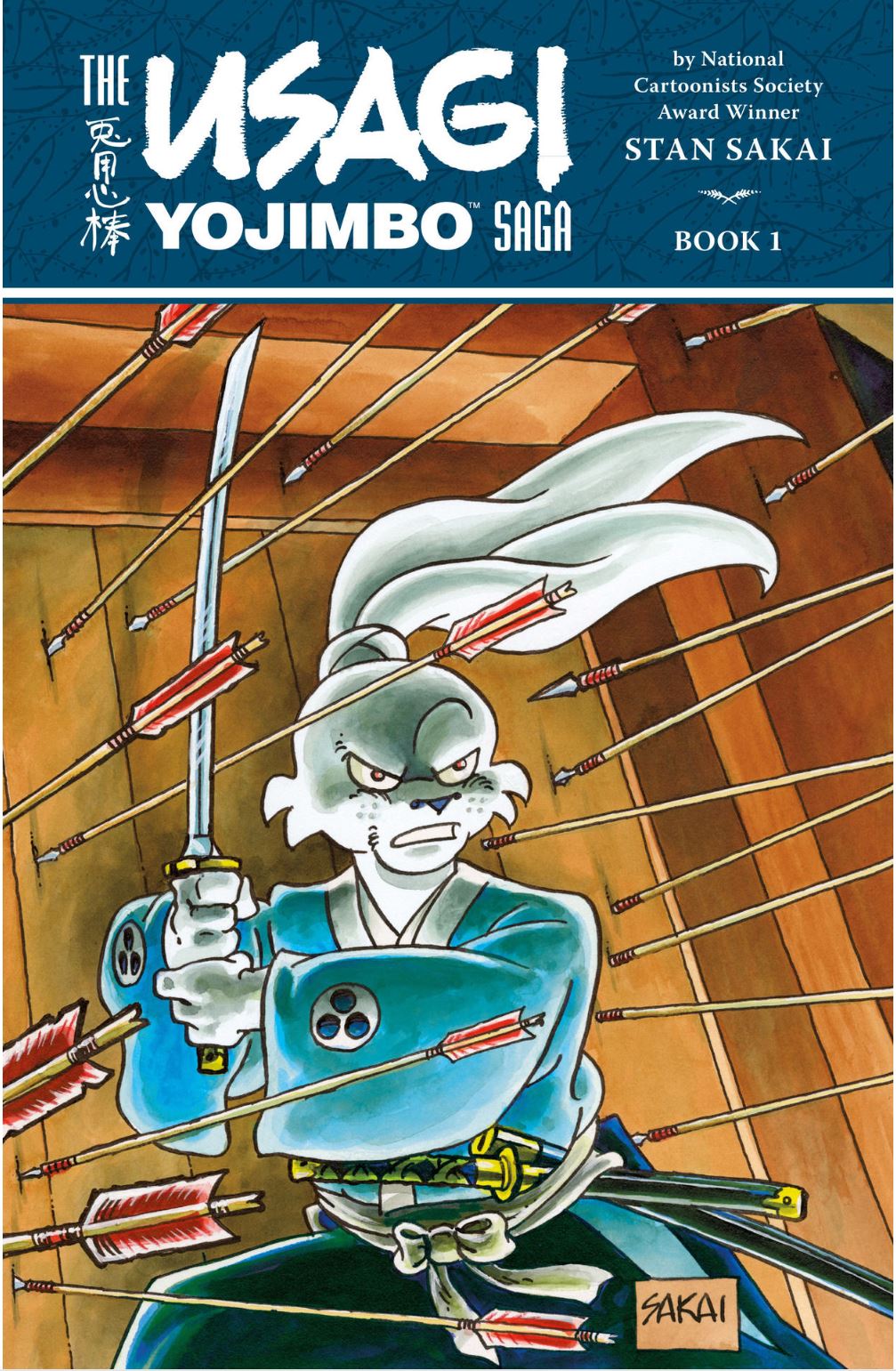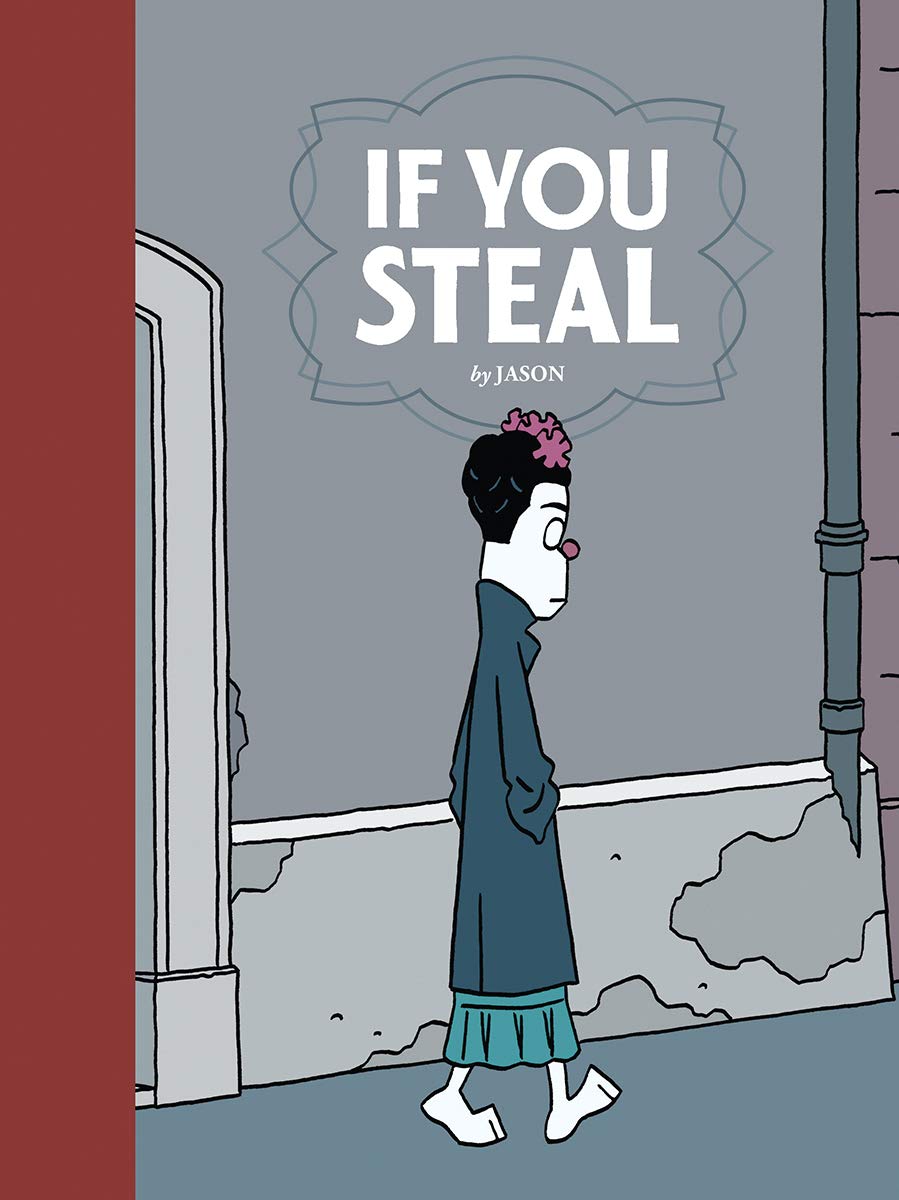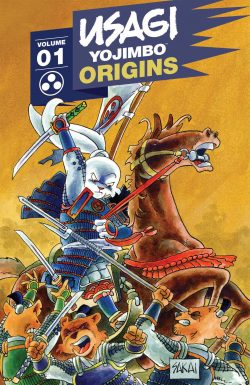

By George Herriman (Fantagraphics Books)
ISBN: 978-1-68396-367-7 (HB/Digital edition)
In a field positively brimming with magnificent, eternally evergreen achievements, Krazy Kat is – for most cartoon cognoscenti – the pinnacle of pictorial narrative innovation. The canon comprises a singular and hugely influential body of work which shaped the early days of the comics industry whilst elevating itself to the level of a treasure of world literature, adored by the literary and entertainment elite whilst simultaneously bewildering and annoying millions who didn’t “get it”…
Krazy & Ignatz is a creation which must always be approached and appreciated on its own terms. Over decades the strip developed a unique language – simultaneously visual and verbal – to allegorically delineate the immeasurable variety of human experience, foibles and peccadilloes with unfaltering warmth and understanding… and without ever offending anybody. Baffled millions, certainly, but offended… Nope, nehvah.
It certainly went over the heads and around the hearts of many, but Krazy Kat was never a strip for dull, slow or unimaginative people: those who can’t or won’t accept complex, multilayered verbal and visual whimsy, absurdist philosophy or seamless blending of sardonic slapstick with arcane joshing. It is still the closest thing to pure poesy narrative art has ever produced. Think of Dylan Thomas and Edward Lear playing “I Spy” with James Joyce amongst beautifully harsh, barren cactus fields as Gabriel García Márquez types up shorthand notes and keeps score…
George Joseph Herriman (August 22, 1880-April 25, 1944) was already successful as a cartoonist and journalist in 1913 when a cat and mouse who’d been noodling about at the edges of his domestic comedy strip The Family Upstairs graduated to their own feature on October 28th 1913. As covered here in heavily illustrated introductory article ‘A Mouse by Any Other Name: Krazy & Ignatz’s Early Life Under the Boards’ Krazy Kat – instantly mildly intoxicating and gently scene-stealing – had first popped up on July 26th 1910 in that strip’s precursor The Dingbat Family: a 5-day-a-week monochrome comedy strip in William Randolph Hearst’s New York Evening Journal.
By sheer dint of that overbearing publishing magnate’s enrapt adoration and direct influence and interference, the cat ‘n’ mouse capers gradually and inexorably spread throughout his vast stable of papers. Although Hearst and contemporary artistic and literary intelligentsia (such as Frank Capra, e.e. Cummings, Willem de Kooning, H.L. Mencken and more) adored the strip, many local and regional editors did not: taking every potentially career-ending opportunity to drop it from those circulation-crucial comics sections designed to entice Joe Public and the general populace.
The feature eventually found its true home and sanctuary in the Arts and Drama section of Hearst’s papers, protected there by Hearst’s unshakable patronage. At last enhanced (in 1935) with the cachet of enticing colour, the Ket & Ko. flourished, freed from editorial interference or fleeting fashion. It ran mostly unmolested until Herriman’s death on April 25th 1944 from cirrhosis caused by Non-alcoholic fatty liver disease. Eschewing standard industry policy and finding a substitute creator, Hearst decreed Krazy Kat would die with its originator.
The premise is simple: Krazy is what we would call gender-fluid; an effeminate, dreamy, sensitive, romantic feline, hopelessly smitten with venal, toxically masculine Ignatz Mouse. A married, spouse-abusing delinquent father, he is rude, crude, brutal, mendacious and thoroughly scurrilous. Ignatz is a proudly unreconstructed male and early forerunner of the men’s rights movement: drinking, stealing, fighting, conniving, constantly neglecting his wife and many children and always responding to Krazy’s genteel advances of friendship (or more) by clobbering the Kat with a well-aimed brick. These he obtains singly or in bulk from local brick-maker Kolin Kelly. The smitten kitten misidentifies these gritty gifts as tokens of equally recondite affection, showered upon him/her/they in the manner of Cupid’s arrows. It’s not a response, except perhaps a conditioned one: the mouse spends the majority of his time, energy and ingenuity (when not indulging in crime or philandering) launching missiles at the mild moggy’s mug. He can’t help himself, and Krazy waits for it to happen with the day bleakly unfulfilled if the adored, anticipated assault fails to happen.
The final critical element completing an anthropomorphic emotional triangle is lawman Offissa Bull Pupp. He is utterly besotted with Krazy, professionally aware of the Mouse’s true nature, but hamstrung from permanently removing his devilish rival for the foolish feline’s affections by his own amorous timidity and sense of honour. Krazy is blithely oblivious to the perennially “Friend-Zoned” Pupp’s dolorous dilemma…
Peripherally populating the mutable stage are a large, ever-growing supporting cast of inspired bit players. These include new player and relentless deliverer of babies Joe Stork; Hispanic huckster Don Kiyoti, hobo Bum Bill Bee, self-aggrandizing Walter Cephus Austridge, inscrutable, barely intelligible (and outrageously unreconstructed by modern standards) Chinese mallard Mock Duck, portraitist Michael O’Kobalt, dozy Joe Turtil and snoopily sagacious fowl Mrs. Kwakk Wakk, augmented by a host of audacious animal crackers such as Krazy’s relations Katfish, Katbird and niece Katrina – all equally capable of stealing the limelight and supporting their own features…
The exotic, quixotic episodes occur mainly amidst the Painted Desert environs of Coconino (patterned on Herriman’s vacation retreat in Coconino County, Arizona) where surreal playfulness and the fluid ambiguity of flora and landscape are perhaps the most important member of the cast. The strips are a masterful mélange of unique experimental drawing, cunningly designed, wildly expressionistic (frequently referencing Navajo arts) whilst harnessing sheer unbridled imagination and delightfully evocative lettering and language. This last is most effective here: alliterative, phonetically, onomatopoeically joyous with a compellingly melodious musical force and delicious whimsy (“Ignatz Ainjil” or “I’m a heppy, heppy ket!”).
Yet for all our high-fallutin’ intellectualism, these comic adventures are poetic, satirical, timely, timeless, bittersweet, self-referential, fourth-wall bending, eerily idiosyncratic, outrageously hilarious escapades encompassing every aspect of humour from painfully punning shaggy dog stories to riotous, violent slapstick. Herriman was a master of action: indulging in dialogue-free escapades as captivating as any Keystone Kop or Charlie Chaplin 2-reeler. Kids of any age will delight in them as much as any pompous old oaf like me and you…
This cartoon wonderment is bulked up with a veritable treasure trove of unique artefacts: candid photos, correspondence, original strip art and examples of Herriman’s personalised gifts and commissions (gorgeous hand-coloured artworks featuring the cast and settings), supported by fascinating insights and crucial history. Bill Blackbeard’s essay ‘A Mouse by Any Other Name: Krazy & Ignatz’s Early Life Under the Boards’ continues detailing the circuitous path to Krazy in Coconino via Herriman’s earlier strips successes The Dingbat Family and The Family Upstairs.
This volume then reveals – mostly in monochrome – the strips from January 5th 1919 to December 25th 1921 in a reassuringly hefty atlas of another land and time, with the unending dramas playing out as before, but with some intriguing diversions. These include a wealth of snow and farming gags, recurring tributes to Kipling’s “Just So Stories” (such as learning how Kookoo Klocks work, why bananas are slippy and hang around in bunches and why Lightning Bugs light up). Early in the year occasional unwelcome guest Blind Pig (a sly salute to speakeasies in Prohibition days) debuts even as the regulars tirelessly test out their strange threesome relationship in a dazzling array of short painful trysts…
The peculiar proceedings are delivered – much like Joe Stork’s bundles of joy/responsibility – every seven days, with running gags on Ignatz being furless and Krazy philanthropically and clandestinely finding ways to buy or grow him a warm winter coat; odd vegetables taking root in the region’s unfeasibly fertile soil and plenty of scandal and gossip spawning mischief from the animal onlookers. A nod to an unstable post war world comes with strikes at Kelly’s brickworks and sundry other reasons why bricks suddenly become scarce, all forcing Ignatz to find replacement ammunition…
Even so, always our benighted star gets hit with something solid: many, variegated, heavy and forever evoking joyous, grateful raptures and transports of delight from the heartsore, hard-headed recipient, with Pupp helpless to thwart Ignatz or even understand why the Ket longs for his hate-filled assaults. Often Herriman simply let nature takes its odd course: draughting surreal slapstick chases, weird physics events and convoluted climate conditions to carry the action and confound the reader, but gradually an unshakeable character dynamic forms involving love and pain, crime and punishment and – always – forgiveness, redemption and another chance for all transgressors and malefactors…
Much time and effort is expended to have Joe deliver a longed-for heir to rich but dissatisfied tycoon Mr. T Vanwagg-Taylor even though each time fate intervenes and the anticipated offspring is left with other mothers. The Ket’s ancient Egyptian antecedents are exposed whilst in the present Krazy is put on trial for being crazy…
A Katnippery is opened and many strips concentrate on how the magic herb is kultivated and konsumed, whilst a fashion for hats and helmets leads to a period of brick imperviousness before the mouse adapts again. Krazy explores careers in music, dance, acting and pugilism as Herriman opens decades of subversive playing with line and shade carefully probing where black ink and white paper are metaphors for race and colour.
When not sleeping in the bath or giving shelter to migrant Mexican jumping beans and land-locked castaway clams, Krazy falls in love with motoring and racing, and also sets up an electrical power company based upon cat fur static, whilst malevolent Ignatz delves deep into the lore of bricks and dornicks, edging closer to having his own kiln and manufactory…
Sometimes there’s no logic in control, as when Krazy obtains the Pied Piper’s magical instrument and the result is not what you’d expect, or as assorted ailments afflict the town too, or it is assailed by reformers and bluestocking moralists…
And then it was Christmas and a new year and volume lay ahead…
Before closing, though, at the far end of the tome you can enjoy some full-colour archival illustration and another batch of erudite and instructional acclimation in ‘The Ignatz Mouse Debaffler’, with Blackbeard, Jeet Heer and Michael Tisserand providing pertinent facts, snippets of contextual history and necessary notes for the young and potentially perplexed.
Tisserand discusses language, race and (undisclosed creole “passing” as white) Herriman’s career as an artist via his character Musical Mose in ‘The Impussanations of Krazy Kat” before Blackbeard’s biographical essay ‘George Herriman: 1880-1944’.
Herriman’s epochal classic is a remarkable triumph: in all arenas of Art and Literature there has never been anything like these comic strips which shaped our industry and creators, inspired auteurs in fields as disparate as prose fiction, film, dance, animation and music whilst delivering delight and delectation to generations of wonder-starved fans with a story of cartoon romance gone awry. If, however, you are one of Them and not Us, or if you actually haven’t experienced the gleeful graphic assault on the sensorium, mental equilibrium and emotional lexicon carefully thrown together by George Herriman from the dawn of the 20th century until the dog days of World War II, this glorious compendium is the most accessible way to do so. Don’t waste the opportunity…
That was harsh. Not everybody gets it and some of them aren’t even stupid or soulless, just unfortunate. Still, for lovers of whimsy and whimsical lovers “There Is A Heppy Lend Furfur A-Waay” if only you accept where and how to look…
The George Herriman Library: Krazy & Ignatz 1919-1921 © 2020 Fantagraphics Books, Inc. All contents © 2020 Fantagraphics Books, Inc., unless otherwise noted. “A Mouse by Any Other Name: Krazy & Ignatz’s Early Life Under the Boards”, “The Ignatz Mouse Debaffler Page”, and Herriman biography © 2020 Bill Blackbeard. “The Impussanations of Krazy Kat” © 2020 Michael Tisserand. All other images and text © 2020 their respective copyright holders. All rights reserved.




